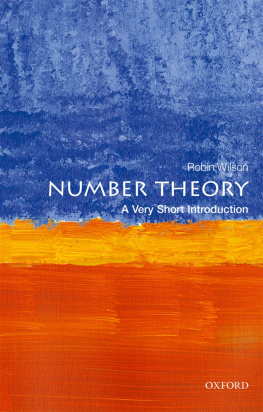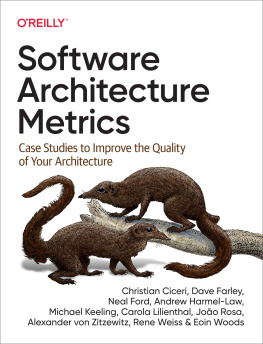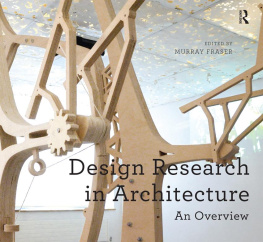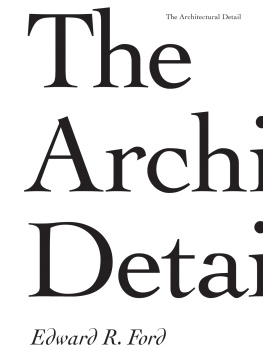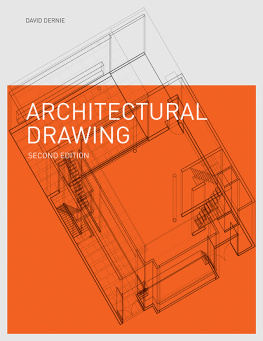IMAGE, TEXT, ARCHITECTURE
Image, Text, Architecture
The Utopics of the Architectural Media
Robin Wilson
The Bartlett School of Architecture, UCL, UK
ASHGATE
Robin Wilson 2015
All rights reserved. No part of this publication may be reproduced, stored in a retrieval system or transmitted in any form or by any means, electronic, mechanical, photocopying, recording or otherwise without the prior permission of the publisher.
Robin Wilson has asserted his right under the Copyright, Designs and Patents Act, 1988, to be identified as the author of this work.
Published by
Ashgate Publishing Limited
Wey Court East
Union Road
Farnham
Surrey, GU9 7PT
England
Ashgate Publishing Company
110 Cherry Street
Suite 3-1
Burlington, VT 05401-3818
USA
www.ashgate.com
British Library Cataloguing in Publication Data
A catalogue record for this book is available from the British Library
Library of Congress Cataloging-in-Publication Data
Wilson, Robin, 1971
Image, text, architecture : the utopics of the architectural media / By Robin Wilson.
pages cm
Includes bibliographical references and index.
ISBN 978-1-4724-1443-4 (hbk) -- ISBN 978-1-4724-1444-1 (ebook) -
ISBN 978-1-4724-1445-8 (epub) 1. Architectural criticism. 2. Architectural writing.
I. Title.
NA2599.5.W55 2015
720.1--dc23
2015011089
ISBN 9781472414434 (hbk)
ISBN 9781472414441 (ebk-PDF)
ISBN 9781472414458 (ebk-ePUB)
Contents
List of Illustrations
Colour Plates
Black and White Illustrations
Acknowledgements
This book has developed over the course of a decade, in its earliest stages through writing for architectural journals, then as a PhD at the Bartlett School of Architecture, UCL, as a set of ideas explored and disseminated through teaching at the Bartlett, and through further research, writing and art practice. Along the way, many people have contributed to the project through their support and insight.
I would like to thank in particular my colleagues in doctoral studies at the Bartlett: Ana Araujo, Tilo Amhoff, Jennifer Beningfield, Anne Bordeleau, Willem de Bruijn, Ben Campkin, Lilian Chee, Kristen Kreider, Aslihan Senel. For their enthusiasm and endless invention I would like to thank those Bartlett diploma students who have attended my Utopographics course since 2007. I would like to thank the teaching staff at the Bartlett for their expertise and support in enabling this research to develop and to have value as a resource for teaching, in particular, Jan Birksted, Iain Borden, Adrian Forty, Penelope Haralambidou, Jonathan Hill, Barbara Penner, Peg Rawes, Yeoria Manolopoulou and Tania Sengupta.
I would like to reserve special thanks for Jane Rendell, whose contribution to my work in her role as a doctoral supervisor and as a colleague at the Bartlett has been invaluable and inspirational.
In their capacity as editors I would like to thank Nadir Lahiji, Lee Stickells and Tim Wray for their support and comments. I would particularly like to thank Valerie Rose and the editorial staff at Ashgate Publishing for their diligent work, understanding and patience in the development of the manuscript.
For their support and encouragement as friends and collaborators I would like to thank Brandon LaBelle, Nigel Green, Andrew Mead, Jasone Miranda-Bilbao, Mike Marshall, Jonathan Mosley and Sophie Warren.
To my family, Lucy, Chloe and Charlotte, I thank you for your support, patience and strength of purpose; to Ann and Geoff the great gift of a space to work; and to my parents Margaret and John, for your unconditional support, this book is dedicated to you.
Introduction
This book brings a critical study of the modern and contemporary architectural media, specifically the print media of the architectural journals. It reveals how the particular conventions and techniques of representation in the mainstream architectural journals, across image and text and in their interrelationship, frame and construct a discourse about architecture. I explore the possibilities and limitations of the journals as platforms for critical discussion and documentary practice within the sphere of architecture, and provide an alternative theoretical framework through which to assess their value as objects of architectural history. The core aim of the book is, however, to rethink the journal page as a site of complexity, as ambiguous representation, poised between the editorial determinations and discursive limits of profession, institution and commerce on the one hand, and the creative and critical strategies, and architectural desires of independent contributors on the other.
The book represents a point of culmination in a gradual shift in my own practice of criticism, from writing for the journals, to also writing about them. Having published frequently as an independent critic for architectural journals I know well the experience of encountering for the first time ones own submitted work in its final, edited form. A complimentary copy of the journal arrives, one searches its pages to find the contributed article, but one, in a sense, never ceases to look for the work submitted weeks before. For, that project of critique, the authored text and its supporting photographic and graphic material, no matter how respectfully handled in the editorial process, has entered into profoundly different circumstances of legibility and meaning. Certainly, one expects the material of the submission to be edited to some degree, but one is never quite prepared for the total effect of the transference from the personal space of the authored text to the graphic and typographic determinations of the space of media dissemination, its channel of transmission, as Roland Barthes puts it.author one might experience in specific instances of alteration or erasure, but also as a deeper sense of alienation from ones own words. It is as if the text had been affected at some deep structural level in the process of it becoming the printed page, a loosening of the connective tissue of its original motivations, so that even the text that has been transposed word-for-word somehow feels subtly disturbed and unfamiliar.
As a project of media critique this study seeks to salvage from the sense of lack, disturbance and disconnection I express in relation to the edited text, a critical attention that addresses the wider mechanisms of architectural journal publishing as an institutional and discursive frame. From an intimate attention to the journal page originally motivated at personal level in observing the fate of my own texts, I shift toward issues of the general and the collective through a particular methodological route, that of the utopian, or utopic. The book defines the utopian as a destabilising and critical force within architectural discourse, as the unexpected emergence of desire in discourse upon the journal page; a kernel of complexity, ambiguity and differentiation in a culture of representation and critique often defined by stable values of production supported through, and in turn supporting, systemically complicit, professional relations.
THE UTOPICS OF JOURNAL DISCOURSE
This study applies theories about utopian discourse primarily drawn from the work of the French philosopher and art theorist Louis Marin, and the American Marxist critic Fredric Jameson. Following Jamesons charting of the role of the utopian in the modern and postmodern periods, the premise of the book is that utopian thinking has undergone comprehensive repression in our current times and that the task of theory is to detect its presence and explore its meaning within new forms and sites of cultural production. I explore how the formatting and mechanisms of presentation of the architectural journals, the presence of generic formulae within the textual and photographic content of architectures media portrait, police this repression within the sphere of architecture criticism and documentation. Such formulae reflect ideological determinations at an institutional level, a systemic protocol controlling in large part the terms of professional contact and coproduction between editors, writers, photographers and architects. The task of the book is thus both to reveal the mechanisms of this repression, but also to identify and explore instances in which the critical force of utopian expression might be understood to return, to disrupt the stability of the journals portrait of architecture. These instances, which will be explored as the principle case studies of the book, take the form of examples of journal contribution (the writing of articles, practices of architectural photography and editing) that, in different ways, work against the grain of the journals mannerisms and formulae of presentation, that expose and challenge the critical limits of the journal context through which they are transmitted. I will also address the projective capacity of the journal page, as a site of representation poised between real and ideal planes, the factual and the imaginary.
Next page

